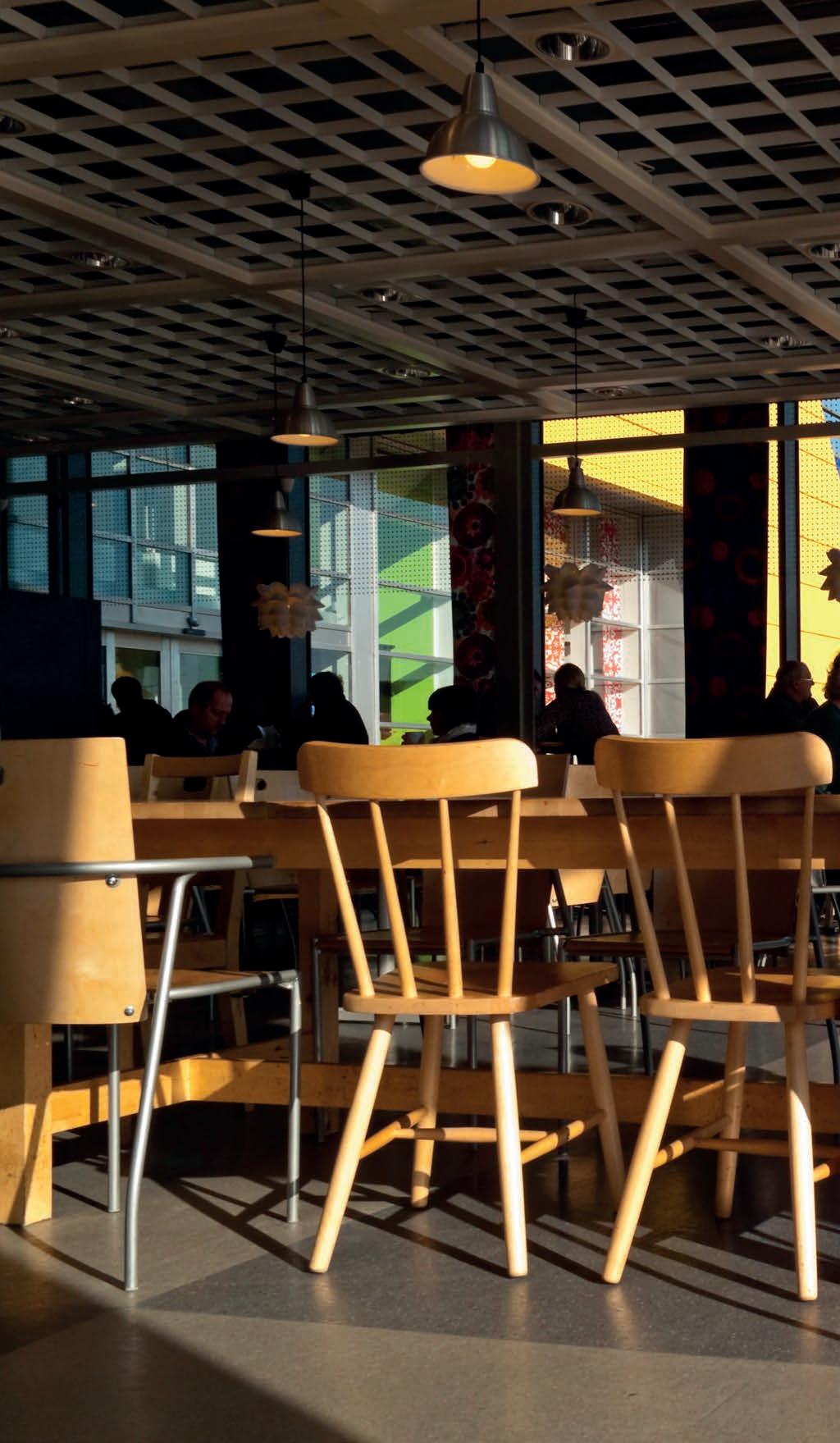






Persistent supply issues, conflict in Ukraine, and rising inflation have challenged the global food system in historic ways. But despite significant hurdles throughout 2021-2022, many food providers maintained a strong commitment to addressing climate change and achieved significant reductions in their carbon footprint.
Because food production drives a quarter of global greenhouse gas emissions, we cannot effectively address the climate emergency without cutting the emissions from food. It’s that simple. But by implementing a suite of relatively easy changes that result in a big impact, we can all contribute to a sustainable food future.
Cool Food is putting that future within reach.
This Progress Report presents a snapshot of how this WRI initiative that started four years ago, working with just a handful of trailblazing food providers, has become a rapidly growing movement made up of food service companies, hotels, restaurants, hospitals, cities, universities, and more. By using cutting-edge behavioral and environmental science at the forefront of climate action, this movement is achieving results.
Cool Food has big ambitions. Aiming to make 12 billion meals low carbon by 2025, Cool Food members now serve 3.5 billion meals each year. The organizations that have signed up to the Cool Food Pledge are also making incredible progress toward their collective target to reduce food-related emissions by 25 percent by 2030.

To all Cool Food members, thank you. You are showing what’s possible. And to those not yet engaged, we invite you to join us. Your involvement is more important than ever.
Ani Dasgupta, President and CEO World Resources InstituteThe food system is a major driver of climate change. Helping more people eat a mostly plant-based diet is a critical solution.

A quarter of all greenhouse gas emissions come from food production.
Two thirds of this is from the food we get from animals.
Source: World Resources Report: Creating a Sustainable Food Future.


Cool Food is a ground-breaking World Resources Institute (WRI) initiative that helps major food providers use cutting-edge environmental and behavioral science to scale healthy, climate-friendly meals that benefi t people and the planet.





Here’s a look at what Cool Food achieved from September 2021 to August 2022:


















































Simply switching from a traditional hamburger to a low-carbon Cool Food Meal once a week for a year would save emissions that are equivalent to the energy used to charge 158,000 smartphones.






































































































































































































































































































Small changes can have a really big impact. When the early adopters of the Cool Food Pledge reduced the share of beef and lamb from 9 percent to 8 percent of total food purchases, the group’s per-plate GHG emissions fell by 21 percent through 2021 – putting the cohort well ahead of the pace needed to achieve the group’s target.




Total food-related emissions from this cohort dropped by 23 percent, but because the COVID-19 pandemic affected food service in significant ways throughout 2020 and 2021, WRI considers emissions per plate to be the most meaningful climate metric until diners have fully returned.
Those newly signed onto the Cool Food Pledge’s target – who use 2019 to 2021 as their baseline data period – have had less time to implement effective strategies. Although their total food-related GHG emissions dropped by 40 percent between 2019 and 2021, this was due to a large decrease in food purchasing linked to COVID-19, and this newer cohort actually had an increase in their per-plate GHG emissions of 6 percent during that time.




It often takes organizations two to three years to start seeing significant decreases in their emissions, but this can be faster with leadership’s investment. We’ve also learned that the biggest impact results from a combination of behavior change tactics and changes in food procurement. The success of Cool Food’s early adopters shows that real change is possible in a short time, and that climate-friendly food can be delicious and cost-effective. It is exciting that the size of the Cool Food movement more than doubled this year with our newest members, and we look forward to accelerating action with them.
&
Other animal-based foods
sum to 100% due to rounding. Purchases shown for “early adopters” with a base year between 2015-18.
may not 9% 28% 63% 7




Using insights from WRI’s research into the effi cacy of climate messaging, Cool Food created the Give a F*rk campaign to raise consumer awareness that even small actions like choosing a WRI-certifi ed Cool Food Meal can have a big impact for the planet.

We created a microsite, messaging, graphics, and a suite of other resources with a distinct look and feel while still being adaptable to individual brands’ marketing strategies. This enabled consumers to easily engage with the campaign and the Cool Food movement without distracting from members’ unique brands.


One key learning was that delivering a sustainability message through the Give a F*rk campaign performed just as well on Panera Bread’s channels as the brand’s more conventional content around seasonal menu listings and promotions.



Creatively Engaging Consumers in up to 1,500 Dining Environments


For Earth Day 2022, Aramark hosted pop-up tasting stations at nine U.S. universities, where students and faculty were treated to Cool Food Meals like Buffalo Chik’n Wraps made with Nestlé Professional’s Sweet Earth products. After a successful pilot of Cool Food Meals at 10 U.S. universities throughout the first half of 2022, Aramark announced it would bring Cool Food Meals to all collegiate hospitality, workplace hospitality, and health care accounts in the United States—nearly 1,500 locations—in January 2023, as it accelerates action following a commitment to the Cool Food Pledge’s target to reduce food-related emissions 25 percent by 2030.

“Partnering with WRI on the Cool Food Pledge will help us slash our foodrelated greenhouse gas emissions while substantially expanding the availability of Cool Food Meals. This will make it easier for more of our guests to make climatefriendly and plant-based meal choices, which, according to our research, is what they increasingly want.”







 Alan Horowitz, Vice-President of Sustainability at Aramark
Alan Horowitz, Vice-President of Sustainability at Aramark










WRI’s foundational Playbook for Guiding Diners Toward Plant-Rich Dishes in Food Service presents cutting-edge academic research into how people choose food.
In 2022, we updated the Playbook with new bestbet behavior change strategies to sell more plant-based menu items.

Learn more at www.wri.org/Food-Providers-Playbook





A WRI study showed that adding climate messaging to menus can double the sales of low-carbon, plant-based dishes.


Two message types were shown to be particularly effective: “small changes, big impact” and “joining a movement.” When diners saw these messages on menus, they were more likely to order a vegetarian dish the next time they ate out too.













From 2019 to 2020, New York City, home to the largest public school system in the United States, reduced emissions by 37 percent per plate served in schools and other public facilities.

As the first American city to join Cool Food, New York again made waves with the launch of its food and climate dashboard showing how much the city’s food purchases affect the climate. WRI provides the data analysis that underpins the dashboard, which will be updated annually. This move brings first-of-itskind transparency to the city’s food purchasing in order to help advocates, consumers, and others understand food’s carbon footprint. This information will drive more food purchasers and consumers to choose lower-carbon foods.
In summer 2022, Washington, D.C., became the second U.S. city to sign onto the Cool Food Pledge’s emissions reduction target. In total, six cities in five countries have joined the pledge.
“I have long said we have to proactively combat our ongoing health and climate crisis, starting with the foods we purchase and consume.



By launching the first-ever ‘food and climate dashboard’ we are creating a more transparent city that informs New Yorkers of the impact of the food system.”
Eric Adams, Mayor of New York City
IKEA, the Swedish brand as famous for meatballs as stylish furniture, says “small things can make a big difference.” That’s hard to argue with. Its plant-balls pack only 4 percent of the climate punch that the ingredients of its traditional beef meatballs do.
As one of the biggest restaurants in the world, IKEA serves 680 million meals each year. And as one of the earliest members to join Cool Food, IKEA has used WRI’s behavior change insights— such as offering more plant-based products and touting the big benefits that can come from even small shifts—to reduce emissions on a similarly impressive scale.
Hej, that’s delicious climate action.















While more people shifting to mostly plant-based diets is critical for addressing the climate crisis, global production and consumption of beef continue to grow.
Cool Food members asked how they could use their procurement to incentivize reducing emissions from beef production and credibly report on the emissions reduction in supply chains. WRI researchers responded by outlining seven opportunities for companies that produce or purchase large amounts of beef to reduce GHG

emissions from beef production. Through an online article and webinars, Cool Food provided timely and important guidance to help food businesses make procurement decisions.






WRI’s researchers are also developing guidance to help food businesses optimize their meat-sourcing strategies in order to maximize their progress toward climate and other sustainability and social responsibility goals. This research will be published in 2023.
95% of webinar participants found WRI’s insights on meat sourcing strategies to further climate and other sustainability goals to be useful for their business.


From the webinar, “Toward Purchasing ‘Better Meat’”











CITIES
Copenhagen
Ghent
Milan
New York*
Toronto
Washington, DC*
CORPORATIONS
Bank of America
BASF


Bloomberg
Genentech
Monde Nissin
Morgan Stanley
Nestlé

Nestlé Professional*
PepsiCo


World Bank Group
RESTAURANTS
Mitchells & Butlers (All Bar One, Harvester)
Aramark*
Bon Appetit Management Company*
Farmers Restaurant Group
Hilton
ISS World*
IKEA
Max Burgers
Panera
RobinFood
UNIVERSITIES
Brandeis University
Harvard University
New York University
University of Pittsburgh
University of Cambridge
University of Maryland
University of Texas at Austin*
Williams College*
HEALTH CARE
Beth Israel Deaconess Medical Center
Boston Medical Center
Brigham and Women’s Faulkner Hospital*
Brigham and Women’s Hospital*
Dartmouth-Hitchcock Medical Center
Froedtert Hospital*
Hackensack Meridian Health
Indiana University Health*
Memorial Sloan Kettering
Montefiore Health System
Morristown Medical Center
Mount Sinai Hospital*
Overlook Medical Center
PeaceHealth Southwest Medical Center
Providence St. Joseph Health*
Seattle Children’s Hospital
Spectrum Health Medical Center
Tirol Kliniken*
UC Davis Health
UCLA Health
UCSD Health
UCSF Health
University of Vermont Medical Center
University of Wisconsin Health
UPMC Magee-Womens Hospital
Virginia Mason Medical Center
*Joined since September 2021